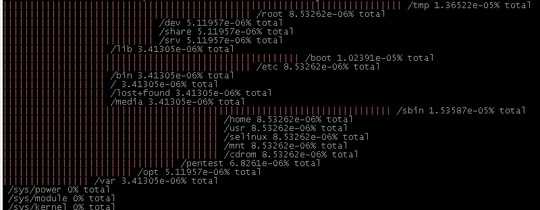11
6
My disk is running out of space:
$ df -h
Filesystem Size Used Avail Use% Mounted on
...
/dev/sda7 803G 715G 48G 95% /home
I'd like to go through the whole home directory and find out the top 10 space-consuming directories or files, to decide whom to be removed.
du -sh * can see size of all subdirectories, but it only gets current folder. I might need to divide into many subdirs respectively and recursively to get who are the culprits I need.
Is there a good way to do this?

2on the command line, you should try ncdu. It's an ncurses du, basically. – Rob – 2013-01-15T16:35:10.690